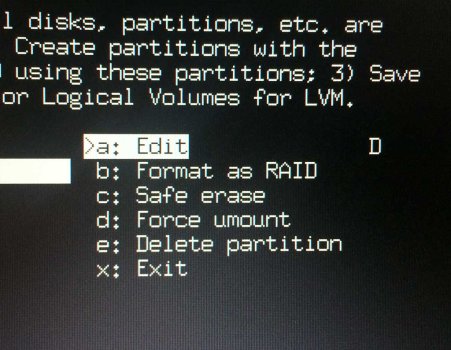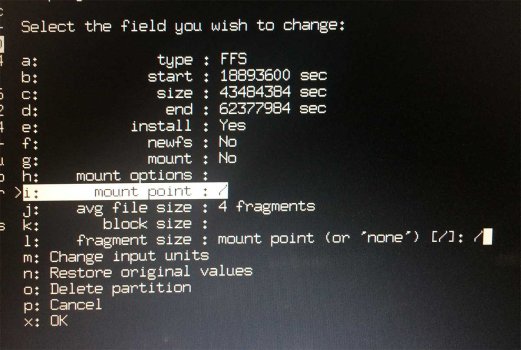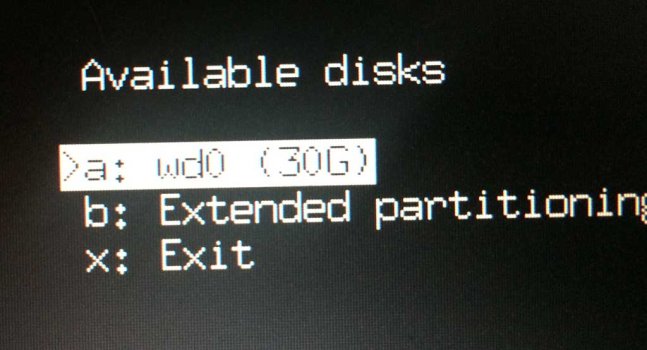Is a PowerBook G3 PDQ 266 MHz of late 1998, running OSX 10.4.11 Tiger and Mac OS 9.2.2.
Monday, April 15, 2024
Friday, April 5, 2024
NetBSD 9.3 on a PowerBook G3 Pismo
I’ve managed to install NetBSD 9.3 on a Pismo 400 MHz. Let save the procedure here.
I used several tutos, each of much help, but each not fitting completely with my configuration, so had to use a mix of all these commands.
Here the links :
Cameron Kaiser’s install on a MacMini G4.
Another MacMini G4 install.
The obligatory online Installation procedure for NetBSD/macppc 9.3.
- Boot your Pismo on a Mac OSX 10.4 or earlier CD or DVD.
With Disk Utility, make two partitions, first one of 8Gb HFS+, and rest in Apple UFS or just free space . Make sure to check « install MacOS9 drivers ». - Grab the NetBSD-9.3-macppc.iso in the iso list here and burn it to a CD.
- Insert the CD in the Pismo, and boot in OpenFirmware.
Thankfully the Pismo has OF v.3.0, so it’s a bit more easy than on previous OF versions to boot from a NetBSD cd. I’ve tried innumerable combinations to try to boot it on a Kanga’s OF v.2..x with no success… The boot command that works for the Pismo is :
boot cd:,\ofwboot.xcf netbsd.macppc - Once it as done his things, it will ask you to choose Install=I or Shell=S or another option I can’t remember… type S to go to a shell.
NOTE, erase/backspace key will not work in this shell, so be careful in all the commands you type. Usually the shell and pdisk will not understand if you type gibberish and will tell you, but still be VERY CAREFUL, specially when we are going to use pdisk.To correct any mistakes, <Control>H (not <Command>H, <Control>H) works just as well as a backspace. Thanks to "Doq" on the PowerPC Macrumors forum for the tip. - We are going to create our SWAP and Unix partition from the 21 Gb free space or UFS partition we’ve created earlier with the OSX Disk Utility, using pdisk for that. So type :
- pdisk /dev/wd0c
To edit the disk. Then type P and enter to have all the partitions listed :

All the partitions are numbered here from 1 to 12.
Nmr 10 is your HFS+ for OS9, all before that are Mac OS drivers and stuff, do not touch.
Nmr 11 is a partition created also by OSX Disk Utility, not sure of the use, red that you can delete it, but I left it, It’s just 8.5 Mb anyway.
Nmr 12, is your 21 Gb free space for NetBSD and Swap.
Note, if you have formatted these 21 Gb in Apple UFS, you first have to delete it. Like so, type :
d
pdisk will ask you which partition to delete, type :
12p
For partition nmr 12. Now type P again to verify, and you’ll see the 12th partition as free space like the image above.
- Now let’s first create our SWAP partition.
- Type c for creating a partition. Pdisk will ask the first block, that is from where to create that partition. Type 12p for that 21 Gb free scape :
First block: 12p
Pdisk will then ask for a partition size in blocks. I want a 1Gb SWAP , so that is 2097152 blocks :
Length in blocks; 2097152
It will then ask for a name for that partition, make it swap:
- Name of partition: swap
- Now the NetBSD partition. Type c to create it. Pdisk will again ask where to start, type 13p for that empty space nmr 13 partition :
It will then ask for a label for your Apple_UNIX _SVR2 format partition. Choose b for a swap partition :
Available partition slices for Apple_UNIX _SVR2:
a root partition
b Swap partition
c do not set any bb bits
d user partition
Other lettered values will create user partitions
Select a slice for default bzl values: b
looks like this :

Type P again to check and it should display your swap as partition nmr 12 and remaining free space as nmr 13 :

First block: 13p
When asked for the partition size (Length in blocks), we want the full 20 Gb left in blocks, that is 43484384 you’ll find on the third column of the 13 rd partition line :
Length in blocks: 43484384
Then let’s give it a name (netbsd) :
Name of partition: netbsd
then It willl ask for a label for your Apple_UNIX _SVR2 format partition. Choose a for root partition :
Available partition slices for Apple_UNIX _SVR2:
a root partition
b Swap partition
c do not set any bb bits
d user partition
Other lettered values will create user partitions
Select a slice for default bzl values: a
should look like this :

We’re done setting up the disk, let’s type P to verify if there’s no goofs :

All looks fine. Now write the changes to the disk by typing w, then y to confirm.
Then quit pdisk with q to return to the shell.
- Now we need to format our root partition to something NetBSD can read, that is ffs. So do :
newfs /dev/wd0a
And let it do his things (note wd0a, it can also be typed rwd0a, « a » is for the partition labeled as root). - Next we need to mount that root partition, and write a fstab file for it and the swap partition. First mount it like so :
mount /dev/wd0a /mnt
then create a etc folder at the root of the partition :
mkdir /mnt/etc
Then create the fstab file into that folder using the included ed text editor which works a bit like vi. like so :
ed /mnt/etc/fstab
a
/dev/wd0a / ffs rw 1 1
/dev/wd0b none swap sw 0 0
.
wq
Note at one point, ed will say « /mnt/etc/fstab: No such file or directory », no worries, the file is indeed not there but it’s creating it.
« a » then enter is for entering edit mode in ed. Next two lines are the actual content of the fstab file. « . » then enter is to quit edit mode.
And wq then enter is to save file and quit ed.
You can verify your work by typing :
cat /mnt/etc/fstab
And it should show you the content of the created fstab file in etc.
Then unmount the root partition, like so :
umount /mnt - Next we go into the installation utility, by typing :
sysinst
Before installing anything we need to make a small change to how the root partition will be mounted, for that go to « e: Utility menu » :
Then to « d: Partition a disk » :
Select « b: wd0a (4.2BSD) » and hit enter :
Then « a : Edit » :
Check that the mount point is really at / . For some reasons it may be at /mnt, Sysinst taking into account that we mounted wd0a root partition there when we created the fstab file. If it is so, navigate to « i : Mount point : /mnt » then hit enter and type « / » (without quotes) and enter. should look like so :
Then go back to Sysinst first menu by going to « x: Ok » and enter.
And choose « a: Install NetBSD to hard disk » and enter :
Choose « a: wd0 (30G) » and enter :
Then « a: Use existing disklabel partitions » :
Then navigate down to « x: Partition sizes ok » and hit enter :
At the next screen, choose full installation « a: Full installation ».
Then « a: CD-ROM / DVD » .
And let the installer do his things. Once it is finished, hit enter to continue, and you’re in the Sysinst menu to set up your system, which is really easy to follow. There you can set the time, your host name, set up the root passwd, create a user, start a number of services like sshd or ntpd …etc.
Also set up the network BEFORE installing Pkgin and Pkgsrc package managers. I had trouble installing these before setting network.
For this, have your router address handy and choose an available local IP address for the machine as only static address will do, for now no dhcp.
Also when asked to choose a DNS server, choose a default Google one (8.8.8.8) as when I tried with my provider’s DNS server, it couldn't find NetBSD mirrors for installing Pkgin and Pkgsrc. It can be changed after install anyway.
Now install Pkgin and Pkgsrc package managers. When all this is done, navigate back to Sysinst first menu and choose « d: Reboot the computer » and enter. - Still here ? And no, it won’t boot into NetBSD yet. If you have already installed MacOS9 on the HFS+ partition, it will boot into it.
If not, the Mac will see no operating system, and you’ll have a blank screen with a Ø in the middle. No panic.
To boot NetBSD, you need to boot in Open Firmware, and OF can only read the NetBSD booter « ofwboot.xcf » and kernel « netbsd-GENERIC.gz » from the HFS+ partition. These are on the NetBSD 9.3 CD rom we’ve been using to do the install. So we need to put it there on that HFS+ partition.
For that we have two options :
- If you have another Mac and Firewire cable handy, connect the two via Firewire and boot the Pismo in target mode (holding t key) and copy the « ofwboot » and « ofwboot.xcf » booter files, and the kernel which is at /macppc/binary/kernel/netbsd-GENERIC.gz, from the NetBSD CD in the other Mac to the root of the Pismo’s hard drive. Note Cameron Kaiser says in his howto it can be helpful to put a decompressed copy of the « netbsd-GENERIC.gz » kernel there too… So I did.
- Or, boot the Pismo on a MacOS9 installer CD, install OS9 (no formating or installing drivers please). Once done, reboot in MacOS9, insert the NetBSD 9.3 installer CD and copy the « ofwboot » and « ofwboot.xcf » booter files, and the kernel which is at /macppc/binary/kernel/netbsd-GENERIC.gz, to the root of the hard drive. - Everything should be Ok to boot the Pismo on the installed NetBSD now. For that reboot in Open firmware,then type :
boot hd:,\ofwboot.xcf hd:10/netbsd
After a dozen of lines, it should again ask « boot », just type :
netbsd
And enjoy.
If the xdm logging manager as not been set up to start at boot during the installation, then « startx » will start Ctwm minimalistic default wm. But there many other you can install.
if we go into antiquity, you can install a full CDE desktop following instructions here :
http://45.76.81.249/NetBSD/macppc/
Which is what I did :
http://cdn.netbsd.org/pub/pkgsrc/packages/NetBSD/macppc/9.3/All/
Even Arcticfox is there, but beware, it was too much for my Pismo to run. Only managed once to use it (slow), and next try it crashed the computer.
Rebooting, the disk showed some errors at system checks, and I had to run fsck_ffs -y /dev/wd0a twice to save the system…
Anyway, a Pismo is not really ideal to run a heavy browser and surf the web, and Netsurf or Lynx are there too.
Sound worked out of the box, I could use cmus to listen to radio streams. Audacious installs fine too, but thrown errors when trying to read streams tho...
I've not tried Wifi cause this Pismo is a bit of a hybrid with a lombard screen, so can't install the airport card internally. Will see how it works with an PC Card maybe.
Since this install, NetBSD 10 is out, I also tried it but after booting the CD, I get a black screen :/ seems consistent with some infos on the NetBSD MacPPC doc that some versions would need the install to be done via serial console, which I’m not ready to try yet… But why does that happen with a new version ? Mystery.
I also did an install on a 500MHz Titanium, install went fine, but the video is all borked up half way into booting from the HD. So for now, I’m playing with the Pismo.
Subscribe to:
Comments (Atom)














